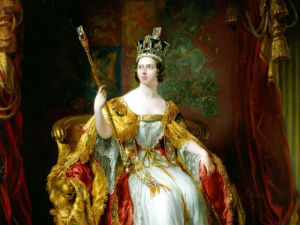Top 5, Allegedly, Mad Matriarchs
We learned from an early age that Queens could be wicked, diabolical, and in some cases mentally challenged. From fairy tales told in our youth, our distrust for Queens grows as we learn about specific historical events that changed the course of the world. Madness and mental illness is not an economic disease that only affects the poor. It does not discriminate and chooses wealthy and impoverished alike. These five royal matriarchs are but a few of the upper echelon of society that couldn’t escape the madness.
A Tale Of Five Matriarchs
Isabel of Portugal
Born in 1428, Queen Isabel of Portugal wed Ferdinand, heir to the throne of Aragon. Their marriage created a joint rule that lasted 35 years and unified Spain. She bore five children, but her daughter, Joanna–Juana la Loca, was considered mentally unstable. It is said that Isabel of Portugal introduced mental illness in the Spanish Royal line. She isolated herself after the death of Ferdinand. She withdrew from public life later in her life, and remained that way until her death.
Juana of Castile of Spain
Juana was born in 1479 was the daughter of Queen Isabel of Portugal and King Ferdinand of Spain. She is commonly referred to as Joan the Mad or Juana la Loca. She was queen of Castile from 1504 and Queen of Aragon from 1516 after she married Philip the Handsome. The year they married King Philip died. It was at this point that she was officially declared mentally ill and confined to a nunnery for the remainder of her life. She passed away after suffering mental illness since childhood in 1555.
Maria I of Portugal
Maria I was born in Portugal in 1734 and was the first queen regnant of Portugal. She ascended the throne in 1777. She married her uncle who became King Peter III. After Maria’s accession in 1777 became Peter III. After the death of Peter in 1786 and of Maria’s eldest son, Joseph, in 1788 and the effects of the French Revolution caused Maria to suffer a complete mental collapse in 1792. , combined with news of the excesses of the French Revolution, so affected Maria that she suffered a mental collapse in January 1792. She entrusted power to her second son, John (the future John VI).
Princess Alexandra Amalie of Bavaria
Princess Alexandra Amalie of Bavaria was born in1826. She was a member of the House of Wittelsbach. She was the eighth child and fifth daughter of King Ludwig I of Bavaria and Princess Therese of Saxe-Hildburghausen, his wife. In 1852, Alexandra began a literary career and published several works, which was uncommon in the era and country. She never married. Alexandra suffered from several psychological issues, including OCD, (she was obsessed with cleanliness), and she only wore white clothing. She developed a delusion in her early twenties that she had swallowed a grand piano made of glass when she was a child. She believed that the piano was still inside her. She passed away in 1875.
Queen Victoria was born in 1819. She reigned as Queen of the United Kingdom of Great Britain and Ireland from June 1837 until her death in 1901. From May 1876, she also added the title of Empress of India. She married her first cousin, Prince Albert of Saxe-Coburg and Gotha, in 1840. When Prince Albert died in 1861, Queen Victoria spiraled downward with severe depression. Victoria became an isolated recluse during those final years of her monarchy. She remained secluded in the royal residences of Windsor Castle, Osborne House, and Balmoral Castle in Scotland. She only wore black for the remainder of her life. She rarely set foot in London in the following years until her death in 1901. She was however the longest sovereign queen. Her seclusion earned her the nickname “widow of Windsor Queen”.
Never A Smooth Road Either Way
The world of a royal is seldom smooth, and the lives and illnesses of these matriarchs belies the times when women were considered second-class citizens, despite their royal roots. Perhaps if mental illness had been better understood at the time, these women would have been able to have a little bit of piece in their lives. It is with certainty, that these are not the only aristocrats that suffered at the hands of mental illness.







